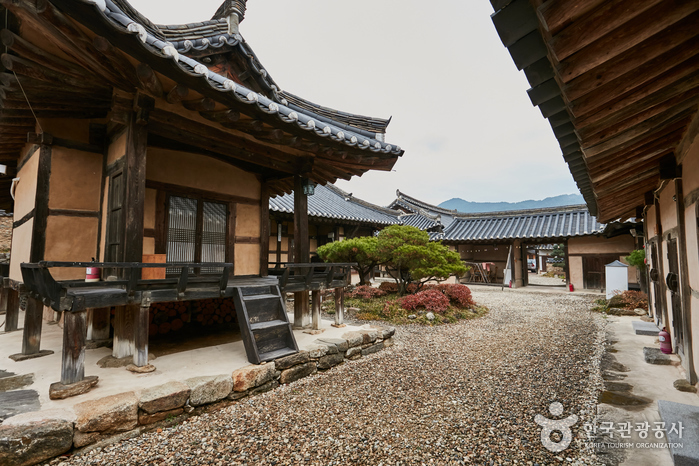Suseungdae de Geochang (거창 수승대)
11.9Km 2024-11-19
Eunhari-gil 2, Wicheon-myeon, Geochang-gun, Gyeongsangnam-do
Geochang está situado en la zona montañosa al noroeste de la provincia de Gyeongsangnam-do y comparte fronteras con las provincias de Gyeongsangbuk-do y Jeonbuk-do. Suseungdae se encuentra en el Parque Nacional del Monte Deogyusan, que se ubica en el centro de las tres provincias adyacentes.
Es una de las atracciones turísticas más antiguas de Geochang y fue llamada originalmente Susongdae, ya que era un lugar donde partían los enviados de Baekje a Silla durante la Era de los Tres Reinos. Más tarde, durante el período Joseon, el nombre fue cambiado a Suseungdae. Hoy en día, sus salas de conferencias y pabellones de estilo antiguo ofrecen excelentes puntos de observación para los visitantes. La atracción también está totalmente equipada con una piscina al aire libre, un espacio para hacer acampada y otras instalaciones. En las noches de agosto, también acoge el Festival Internacional de Teatro.
Wonhak Goga (원학고가)
11.9Km 2025-06-04
109-5, Hwangsan 1-gil, Geochang-gun, Gyeongsangnam-do
Puente Colgante del Monte Udusan (Puente Colgante en Forma de Y de Geochang) (우두산 출렁다리 (거창 Y자형 출렁다리))
13.5Km 2024-10-10
Uisangbong-gil 830, Gajo-myeon, Geochang-gun, Gyeongsangnam-do


 Español
Español
 한국어
한국어 English
English 日本語
日本語 中文(简体)
中文(简体) Deutsch
Deutsch Français
Français Русский
Русский